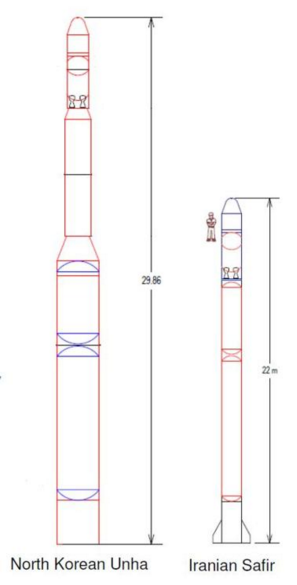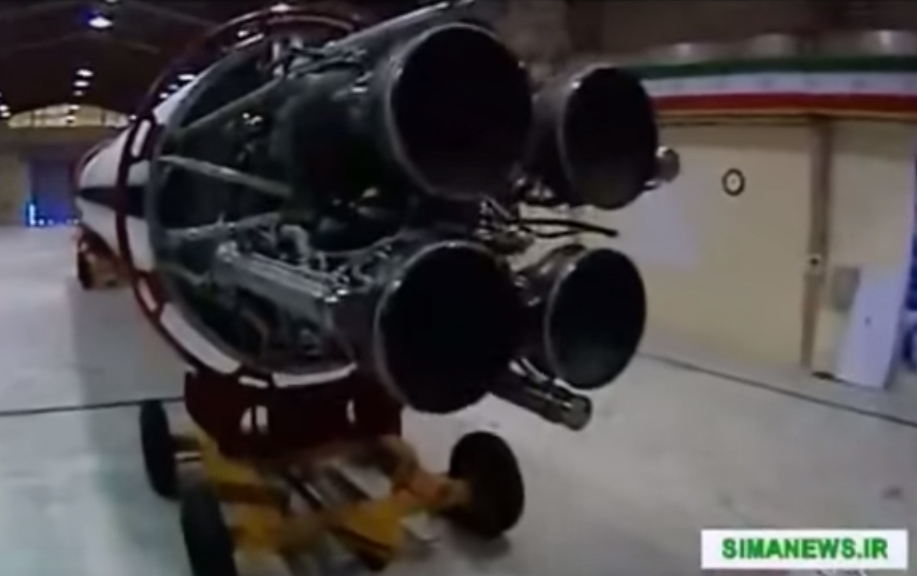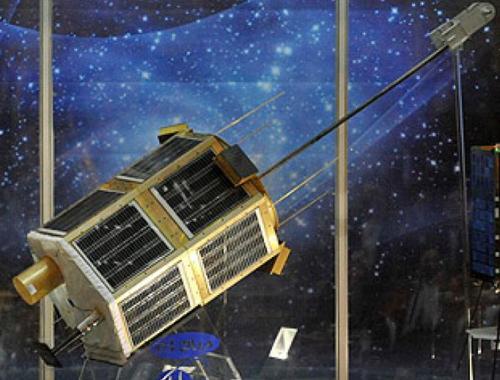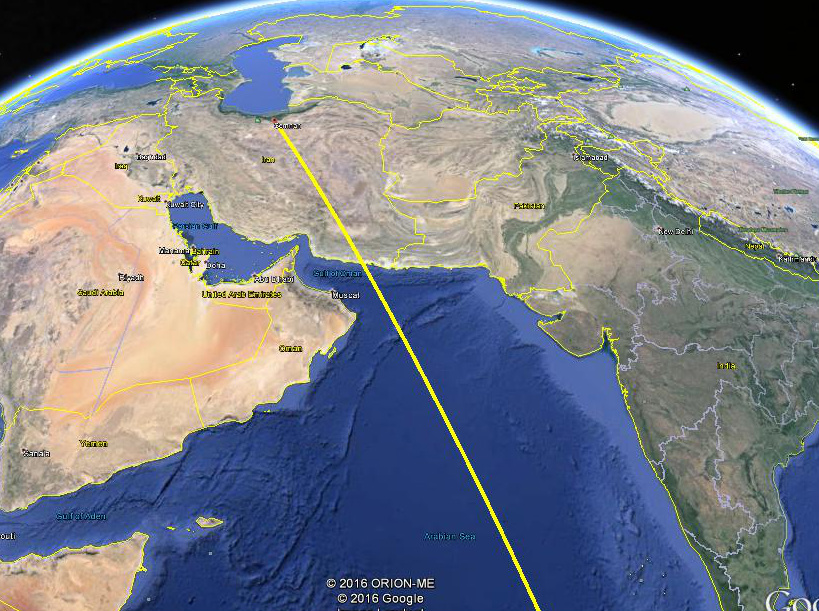Iran may be attempting a satellite launch this month. While it is always difficult to read the tea leaves when predicting Iran’s space activity, officials announced its new Simorgh launcher would be unveiled and a satellite would be launched soon.
Last week, a mock up of the Simorgh was displayed on the street as part of the events commemorating the Iranian revolution. Arms Control Wonk has been keeping an eye on Iran’s NOTAMs (notices to airmen), which keep air traffic at a safe distance during rocket launches, and therefore gives a window for upcoming launches. There’s a NOTAM in place near Iran’s Semnan launch center in the north central part of the country for the coming week.
This would be the first launch attempt of the Simorgh. (Simorgh is a mythical winged female creature; she looks pretty ferocious in the 16th century art below (Fig. 1), but I’m assured she is benevolent.)

Fig. 1. Young man carried off by a Simurgh, 1590. (Source: Aga Khan Museum)

Fig. 2. Relative size of Unha and Safir. (click to enlarge) (Source: T. Postol)
Iran has successfully placed four satellites into orbit: the Omid (2009), Rasad (2011), Navid (2012), and Fajr (2015). These were all small satellites, 50 kg or lighter, lofted into such low-altitude orbits that atmospheric drag brought them down within weeks. There’s evidence that a number of launches failed between the Navid and Fajr successes.
What is the Simorgh?
These previous satellites were launched on Iran’s small Safir launcher. Safir is essentially a Shahab–3 missile (which is very similar to the North Korean Nodong missile) as the first stage with a small second stage on top (Fig. 2). It is much smaller than the Unha rocket North Korea recently launched, with a mass of less than 30 tons compared to about 85 tons for Unha. It can only lift lightweight satellites to relatively low altitudes.
Simorgh is believed to be similar in size to Unha, but with two stages rather than three (Fig. 3).

Fig. 3. Simorgh on display in Iran. (Source: Ruptly)

Fig. 4. Four engines in Simorgh first stage. (Source)
Like Safir and Unha, it uses liquid fuel. While the first stage of Safir is powered by a single Shahab engine, the first stage of Simorgh uses a cluster of four Shahab engines (Fig. 4)—similar to the way Unha uses four Nodong engines in its first stage. This stage is believed to continue to use 1960s Scud-type technology and fuels. Iran has not tested this stage yet.
Less is known about the second stage of Simorgh. The upper stage of Safir is believed to use a pair of small engines that burn a more advanced fuel than the first stage, but provide a relatively small thrust. The upper stage of Simorgh is significantly larger and heavier than that on Safir, so its engines must provide several times as much thrust. If the two stages of Simorgh are capable of putting a heavier satellite into orbit, this suggests this stage uses similar fuels as the Safir upper stage.
Simorgh was meant to be launched in 2010, and its conspicuous absence could have any number of meanings: that its development has been harder than anticipated, that sanctions on ballistic missile and space technology have limited Iran’s ability to get materials it needs, or that there have been test launches already that have failed and not been reported.
What would it launch?
Simorgh, being a much larger and more capable launcher than Safir, could potentially put larger satellites into higher orbits. Larger satellites mean more capability, and higher orbits mean they will stay up for longer. Some reports say Simorgh could place a 60 kg satellite in a 500 km altitude orbit; others, such as its poster for a Moscow airshow say up to 350 kg to low earth orbit, although that seems unlikely.

Fig. 5. Tolou satellite. (Source)
Iran has been building and displaying numerous satellites since it started actively trying to launch satellites. The lighter ones have been launched by Safir, but the more massive ones have been waiting for years. I’ve heard this launch might carry the Tolou, which is said to have a mass of 80 kg, measure 100 cm tall and 70 cm across, and is designed to take photos of the earth with 50 meter resolution (Fig. 5). Fifty meters resolution, of course, is far inferior to satellite imagery you can buy commercially, which can resolve detail at less than 1 meter. This is not the point, though. Iran’s goal is presumably to learn and improve satellite construction, control and communications, and to systematically improve its launch capabilities.
To avoid flying over foreign territory, to reduce risks of dropping debris due to a malfunction early in flight, it would have to be launched to the southeast and follow a path similar to that shown in Fig. 6.

Fig. 6. Likely flight path for Simorgh launch (Source: UCS and Google Earth).
Is this a step toward Intercontinental Ballistic Missiles (ICBMs)?
Although more powerful than Safir, the Simorgh launcher is still able to carry only relatively lightweight satellites into orbit. To reach population centers in the United States, Iran would need a missile that could reach 10,000 km. Simorgh almost certainly does not have the ability to carry a first generation nuclear weapon, with a mass of 500 to 1000 kg, to that range.
While satellite launches can help Iran develop the kind of rocket technology it could use to build longer range ballistic missiles, the specific purpose of this launch appears to be placing another satellite in orbit.
Fortunately, Iran does not have a nuclear weapon, and its program for developing the materials that could be used to make a weapon has been curtailed by the recent nuclear deal.
A key part of an ICBM system is the re-entry vehicle, which Iran has not tested. An ICBM sends its payload (weapon) up to about 1,000 km above the earth, it travels many thousands of miles, but then it has to come back down to earth through the atmosphere at very high speeds. The heat created by atmospheric friction at these speeds will damage or incinerate anything not specifically designed to be protected. Building a heat-shielding re-entry vehicle that also keeps position errors to a minimum is a difficult technical task, and most definitely requires flight tests.
An update to this post can be found here (2/22/16).
